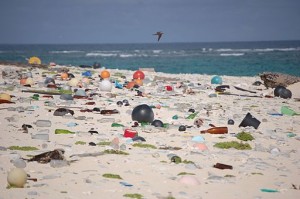The Power of Plants in Polluted Ecosystems
Although more research is needed, it looks like we will be seeing more and more plants silently but effectively cleaning our ecosystems.
 Image: By 3268zauber (Own work) [CC-BY-SA-3.0 (http://creativecommons.org/licenses/by-sa/3.0)], via Wikimedia Commons
Image: By 3268zauber (Own work) [CC-BY-SA-3.0 (http://creativecommons.org/licenses/by-sa/3.0)], via Wikimedia Commons By Flora Haynes
BSc Ecology and Conservation, @FloraHaynes
Phytoremediation is a method used to remove pollutants from the environment using plants. The term covers several methods which use plants to remove, degrade or stabilise pollutants.
Plants have the ability to mediate pollution through absorption of the pollutant (rhizofiltration), which is then broken down by the plant (phytodegradation). The plant and the pollutants within can also be removed from the site or ‘phytovolatised’ to the atmosphere through the leaves. If metals have accumulated in the plant then they can be ‘phytoextracted’ and recycled. But this is something not all plants are capable of; biodegradation can be enhanced in the soil (phytostimulation) and certain plants can immobilise pollutants, therefore halting further contamination (phytostabilisation). As well as their species specific remediation qualities, all plants prevent wind, rain and groundwater from carrying pollutants away from the site.
So what are the drawbacks? The plants have the potential to harm the local ecosystem, especially though bioaccumulation. Although larger animals can be excluded from the site, birds and insects cannot. It can take years to clean a site using phytoremediation, which is an economic drawback as the site cannot be used for any other purpose. However, phytostabilisation allows other plants to colonise an area while the site is phytoremediated. This would provide a habitat for local wildlife. The removed biomass is often burnt producing hydrocarbons, and therefore, ironically, one pollution problem is solved and another created. The same can be said of phytovolatisation which transfers the pollutant to the air. Finally, the method is only appropriate for shallow, low-moderate levels of contamination, as phytoremediation is limited by the depth the plant’s roots can penetrate. Hybrids and hyper-accumulators are helping to reduce this limitation.
Its main benefit for conservation is its reduced impact on the environment, in comparison to other methods, and the fact that it allows considerably quicker re-colonisation of sites.
Could phytoremediation be the low cost pollution solution of the future? Despite its drawbacks, phytoremediation has already proved its effectiveness. Its first use was at Chernobyl to combat pollution from the 1986 nuclear explosion, and it has since proved effective at remediation of pesticides, oil, heavy metals and explosives. Although more research is needed, it looks like we will be seeing more and more plants silently but effectively cleaning our ecosystems.
Learn more





No comments yet.